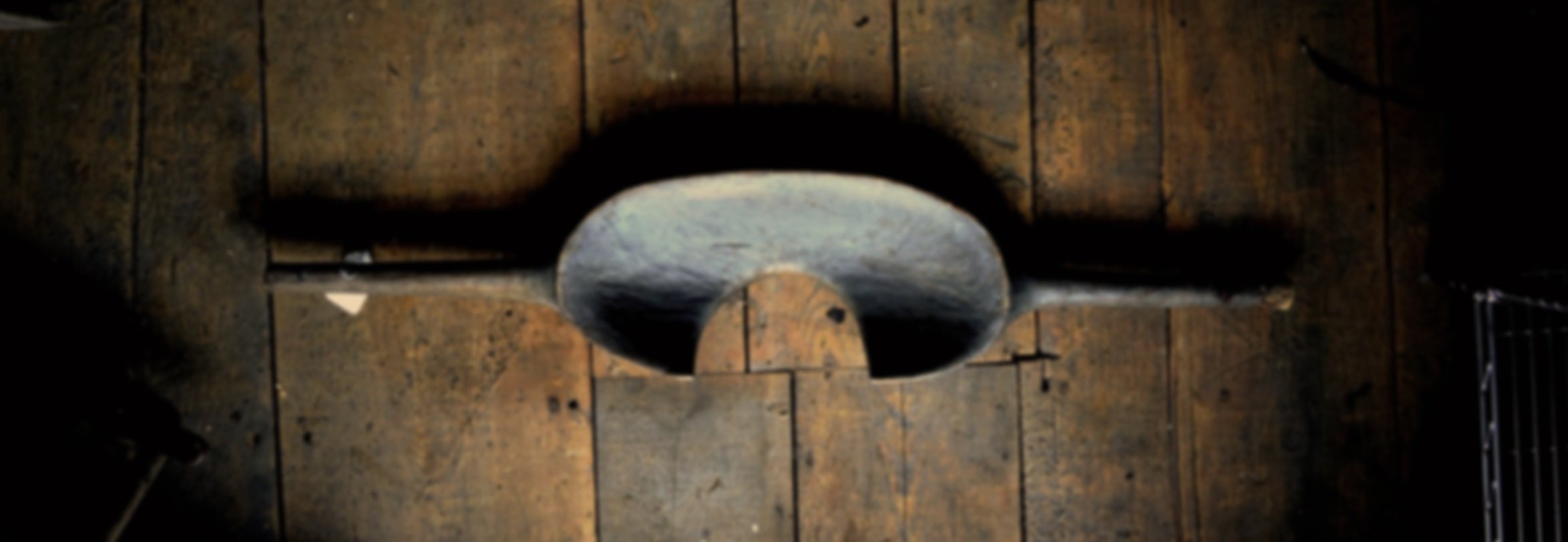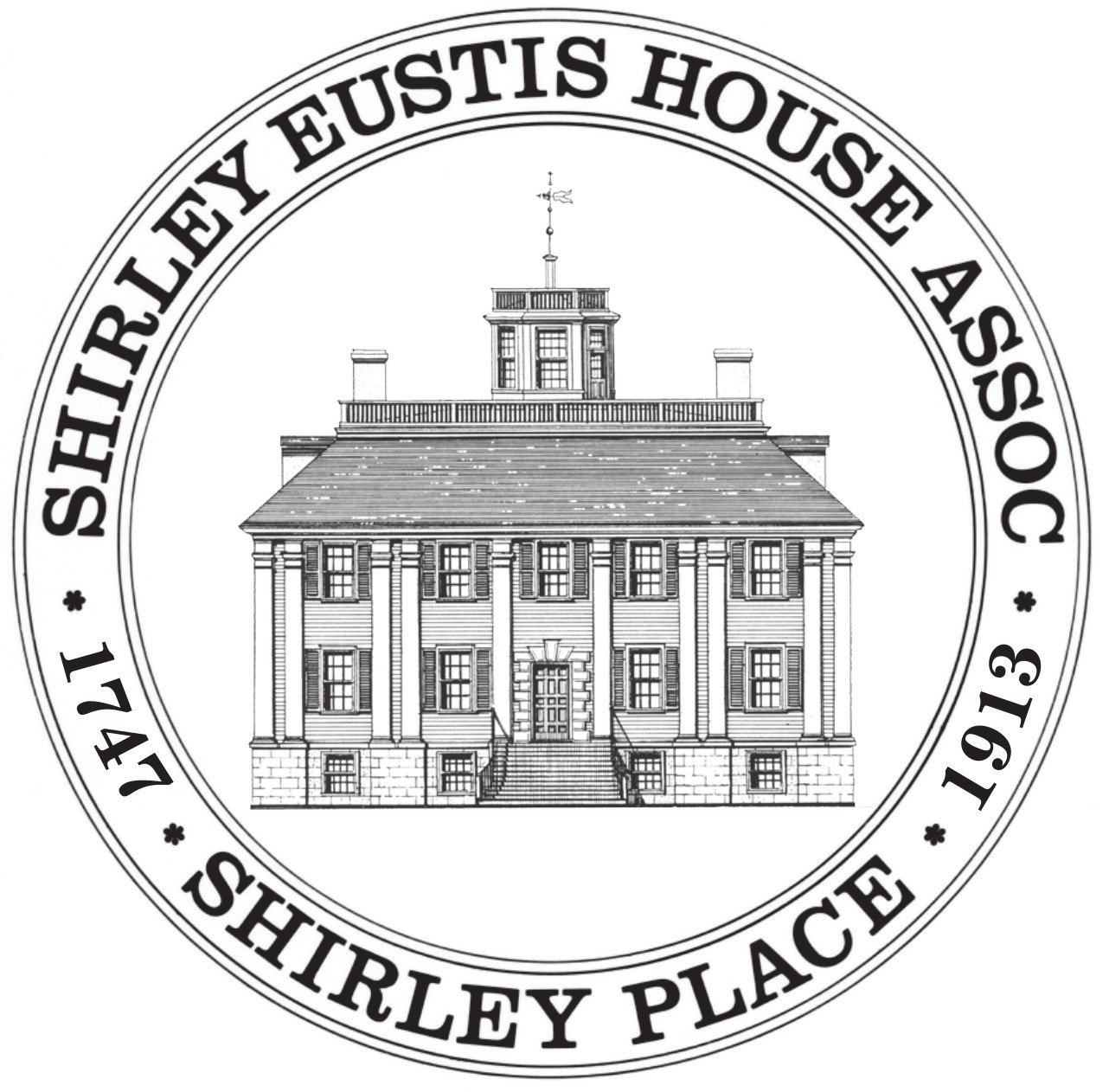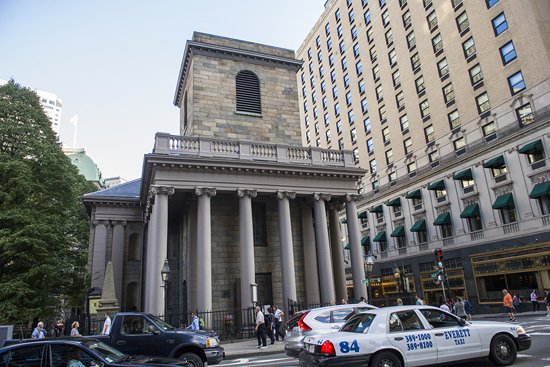
Enslaved Lives in the Shirley Household
< Back to Enslavement at Shirley Place
How We Know What We Know About Enslaved People at Shirley Place
Researching the history of enslavement is difficult. Since most enslaved Africans were treated as less than human, it was not a priority to keep detailed records of their lives. Often, all that remains of an enslaved person’s existence are records of their birth, death, and potential sale to other enslavers. There are very few clues telling historians who these people were or revealing their personalities. In some cases, even basic records have been destroyed by time, erasing enslaved people from the historical record completely.
King’s Chapel, where several of the people William Shirley enslaved were baptized. Photo taken by Jackie Ricciardi of Boston University.
However, there are a few places researchers frequently find information on enslaved people’s lives. One is in “vital records” - births, baptisms, deaths, and marriages. At the Shirley-Eustis House, for example, we know of several people who were baptized at King’s Chapel, in downtown Boston, where William Shirley was a member. Churches kept meticulous records of who was a part of their congregation because events like baptisms and marriages were considered religious sacraments. Even if a white church member enslaved people, it was not uncommon for their slaves to be a part of the same religious community. Shirley even had a young girl whom he enslaved baptized only days before she died, perhaps to ensure she died as a Christian.
Enslaved people’s names also survive in the records of those who enslaved them. Bills of sale, for instance, were used to transfer legal ownership of a slave from one person to another. These records are more common in the American south than in Massachusetts because in Massachusetts, it was more common to informally lend or “borrow out” enslaved people to other friends or family members. We do not yet have any records of enslaved people being bought or sold by the Shirley family. However, there are records of enslaved people listed as property in Shirley family members’ wills. This is another major source of records, for enslaved people were often bequeathed to surviving family members just like anything else considered a piece of property. Similarly, Governor Shirley’s daughter, Elizabeth, claimed an enslaved person when she filed with the British government for loss of property following the American Revolution.
A clip from Elizabeth Shirley Hutchinson’s 1766 inventory of her belongings. Note that among her personal items are listed two enslaved people, Ceasar and Hannah, as well as their clothing and bedding. This does not tell us much about Ceasar and Hannah, but it informs us that they lived and worked as part of the Shirley and Hutchinson families.
Finally, enslaved people can also be identified in what are known as “runaway slave advertisements.” In British colonial North America, advertisements could be placed in local papers when an enslaved person fled the home of their enslaver seeking freedom. These notices identified the runaway based on their age, appearance, any distinctive features, and the clothes they were wearing when they left. They also promised a reward to anyone who brought the enslaved person back to their enslaver. Runaway slave advertisements provide a wealth of information about the appearance and descriptive details of enslaved people who sought their freedom.
This runaway slave advertisement was placed in the Boston Newsletter on February 17, 1732. Image courtesy Aabid Allibhai’s “Working Report on Slavey at Shirley Place.”
This runaway slave advertisement from 1732 was likely placed by William Shirley himself. In it, we notice several key things about the man who escaped:
His name was Jack.
He was about nineteen years old.
He was of average height and build.
He is described as a “molatto,” a term meaning that he was of mixed African, European, and possibly Native ancestry.
His head was shaved, and he had several noticeable scars under one eye.
He was wearing a ring.
These details give us a rare visual picture of a man who may have lived with and worked for William Shirley not long after the future governor first arrived in the colonies. With the information from this advertisement, we can imagine what Jack looked like as he fled enslavement and tried to escape to freedom or perhaps just to a temporary respite to his former home. His fate is unknown as his name does not appear again in Shirley’s surviving records.



